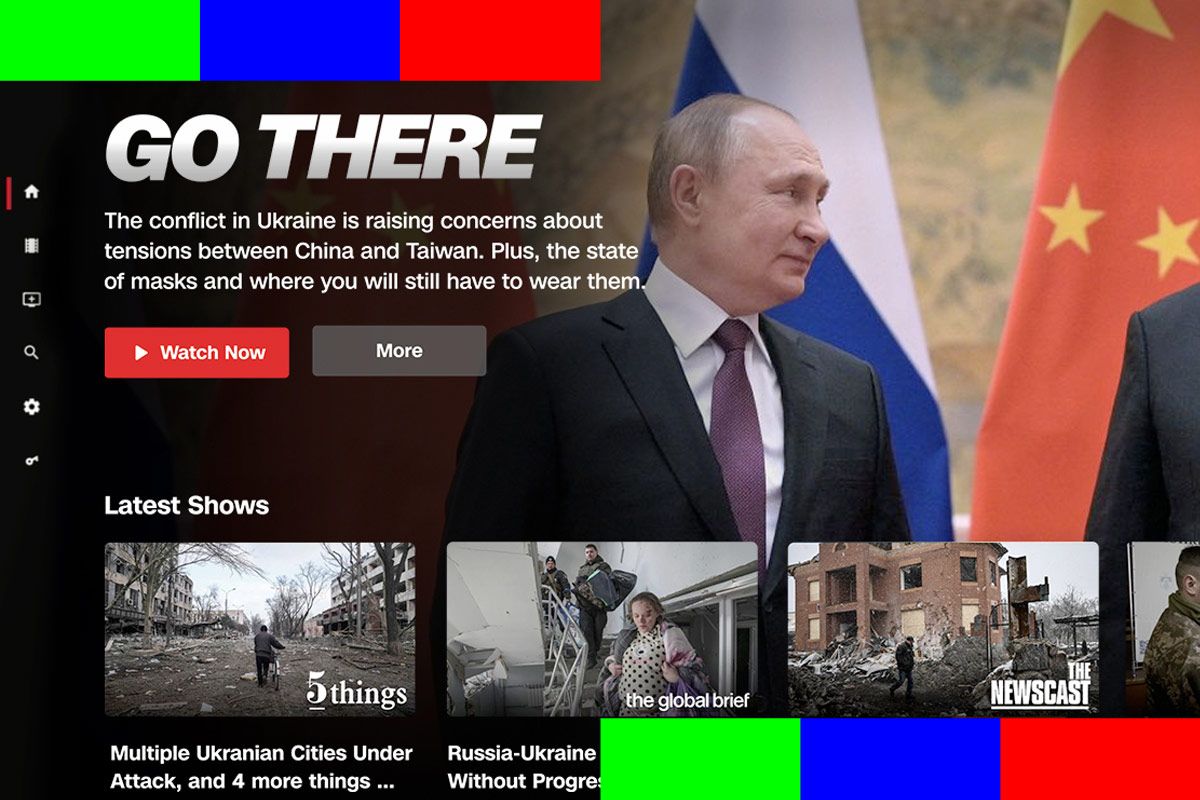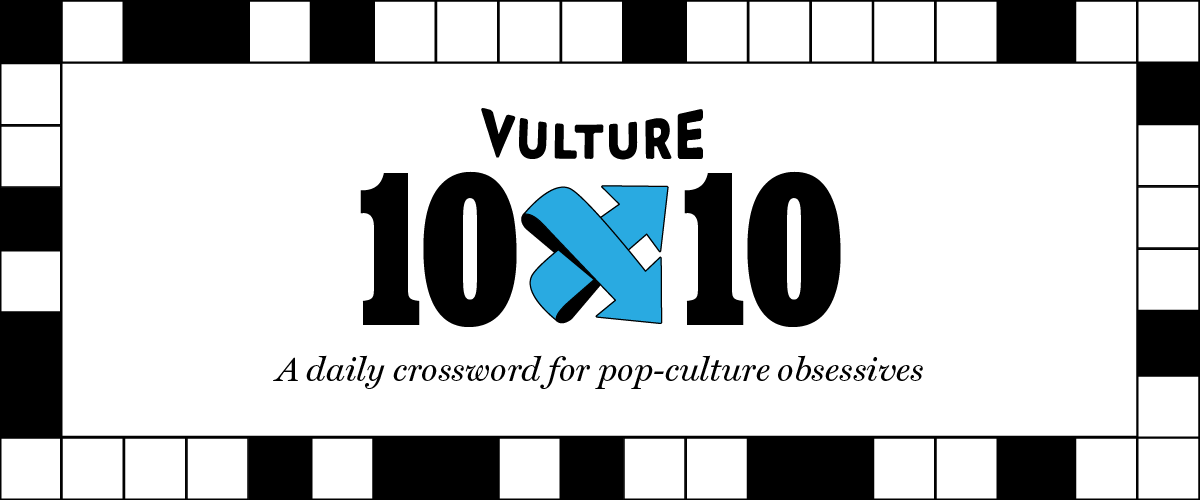 Welcome back to Buffering, where this week the focus is on the just-launched CNN+. WarnerMedia is late to the streaming news wars, but it's putting a lot of money and effort behind its digital evolution of CNN. Unfortunately, I'm not so sure the result is something which has much of a chance of succeeding, at least not in its current form. A WarnerMedia project with much better odds: HBO's Game of Thrones prequel House of the Dragon, which this week finally got a premiere date (August 21). That's just a dozen days before Prime Video takes the wraps off its super-costly Lord of the Rings: The Rings of Power. I had long suspected HBO wanted to get its big 2022 tentpole into the market before LOTR, but I honestly never thought the two shows — which will both drop episodes weekly rather than all at once — would overlap for most of their respective runs. This could be the biggest TV franchise face-off since CBS and NBC debuted promising medical dramas Chicago Hope and ER during the same week in September 1994. It will be fascinating to see the battle for attention and social media buzz play out. As always, thanks for reading. –Joe Adalian | | Stay updated on all the news from the streaming wars. Subscribe now for unlimited access to Vulture and everything New York. |  | ![]() | | Photo-Illustration: Vulture; Photo by Apple TV | | | | CNN created the very concept of cable news back in 1980, immediately disrupting decades of network-TV dominance of video journalism. Fifteen years later, it was one of the first mainstream-media outlets to embrace the promise of the nascent worldwide web with the launch of CNN.com. And yet despite these pioneering roots, it wasn't until this week — and the long-promised launch of subscription streaming service CNN+ — that the network founded by maverick businessman Ted Turner finally joined TV's great shift from linear to digital. A brand once synonymous with being ahead of the curve now finds itself playing catchup — and based on what's been revealed so far, that effort is off to a slow start. | | While it's far too early to reach any definitive judgements, CNN+ in its formative phase feels somewhat like the Quibi of streaming news: Lots of money has been spent, big stars are onboard, but it's hard to figure out just what the service is supposed to be and why a large number of people will want to pay for it. As with Jeffrey Katzenberg's failed experiment in miniaturizing content, the production quality of the handful of CNN+ originals in production so far is top-notch, comparable to anything on the cable channel. The star wattage of the service's anchor lineup is also undeniable: All the big names are involved, from Anderson to Wolf, much the same way Quibi was able to brag about its projects from Kevin Hart, J.Lo, and The Rock. | | The problem with CNN+ isn't that what's on the service is in any way subpar. It's that the promise implied by the name — the comprehensive news coverage of CNN plus programming you can't find on the linear cable channel — comes nowhere close to being fulfilled by the actual product. A $6 per month subscription fee doesn't give a user access to any daily or weekly CNN TV content, either live or on demand. You can watch Jake Tapper have a fun conversation with Dolly Parton on Jake Tapper's Book Club, but you can't stream his show on CNN+ when it airs each weekday on TV, or even the next day on demand. Wolf Blitzer has a nightly CNN+ program, but his trademark Situation Room remains behind a CNN cable paywall. | | What's most perplexing of all is that CNN+ not only fails to give users access to CNN, it doesn't even try to provide some sort of streaming equivalent of a 24/7 news service. You can't just click on CNN+ any time day or night to find out what's going on in the world right now. Instead, the platform offers a couple of short, once-a-day digests designed to give a broad overview of events (5 Things, The Big Picture, Go There, Global Brief), plus specialty shows devoted to politics (The Source) and media (Reliable Sources Daily). Blitzer's aforementioned The Newscast is the closest thing to a traditional news program on CNN+, but the first two editions ran for all of 22 minutes (minus commercials, which CNN+ blissfully does not have). | | As for breaking news, it does exist on CNN+: Wednesday saw the platform cover the return of a U.S. astronaut from space and President Biden's plea for more COVID funding. But because the service doesn't have a regular feed of live programming throughout the day, you can't just leave CNN+ turned "on" via your TV and be alerted to some new urgent event via that familiar CNN breaking-news audio cue. You have to be browsing the app when a special report pops up, or more likely notice it after the fact, as I did on Wednesday. And if you live on the West Coast, as I do, the last major news update to CNN+ comes at 4:30 p.m. The early evening and primetime hours are news deserts on CNN+. | | To be fair, CNN hasn't been explicitly telling consumers that its new streamer is a replacement for the mothership. In the handful of interviews execs have done about the platform, they've been honest in admitting what their game plan is. "I think it's important for … the whole audience to understand that we are not putting a linear feed out there," CNN+ programming chief Rebecca Kutler told AdWeek's TV Newser. "We are a streaming platform and we are leaning into what streaming does best, which is giving our subscribers the choice." Thing is, CNN+ really isn't offering a choice because you can't choose a 24/7 linear feed of CNN+ content, the way viewers can with similar ad-supported services from ABC, CBS, and NBC, or even the CNN-branded AVOD channels on services such as Pluto, which repurpose CNN linear programming from a few hours earlier in the day. | | It's not much of a mystery why CNN+ isn't a version of CNN for cordcutters. The network brings in hundreds of millions in revenue every year from cable operators who pay for being the exclusive home of a CNN linear channel, precluding CNN parent WarnerMedia from simply going direct-to-consumer with a digital facsimile. And while cable networks such as AMC and CNN sibling HBO have figured out how to keep cable operators happy while also playing in the D-T-C space, the financials clearly don't make sense for CNN right now. So instead, much the way cable giant Hallmark Channel has chosen to serve cordcutters with Hallmark Movies Now (which is really Hallmark Movies Then, because it mostly serves up library content), CNN+ is more of a CNN2 — an evolution of the brand rather than a streaming substitute. | | Problem is, as with Quibi, I don't know how much market demand there is for a CNN aimed at either superfans of the original service or cordcutters willing to settle for what is very much CNN Lite. Unlike Fox News, CNN shows and anchors do not (thankfully) attract a cultlike following, even if several of them no doubt have very loyal fan bases. (Where's my Wolf Pack at?) Anderson Cooper is a respected journalist and, as evidenced by his annual New Year's Eve celebration of chaos, he's also an engaging personality. But I don't know if having him sit in his office talking to a mindfulness coach via Zoom (this really happened on CNN+ Tuesday) is the sort of stuff that makes consumers smash that subscribe button — at least not if a monthly fee is involved. | | Again, it's the same issue Quibi ran into: Some of their shows were actually pretty good, but collectively, they didn't amount to something you'd want to pay for on a regular basis. A CNN+ that was a free, ad-supported product would feel a lot more impressive. But even then, it would be getting into the gate woefully late. After some early struggles, the aforementioned networks streamers have revolved into pretty respectable offerings, and they all feature much more live news content than CNN+, as well as increasingly ambitious signature newscasts. Those platforms have, to varying degrees, also done a good job integrating local news content from their respective network-owned stations — something missing entirely from CNN+. | | All of this is not to suggest that CNN+ is DOA or devoid of promise. As good as they are at keeping audiences informed, services such as NBC News Now, ABC News Live, and the CBS News streaming app lean heavily on less seasoned anchors and reporters, as well as on parent news organizations that have dramatically slashed their staffs and budgets over the past few decades. By contrast, CNN+ is being powered by the global resources and much deeper talent bench of CNN. | | The reason so many viewers turned to CNN during the early days of Russia's Ukraine invasion is because they knew it would have the best, most extensive coverage on TV (and it did). While CNN+ so far isn't offering a lot of regularly scheduled hard news content, the shows it does have are all being executed at a higher level than what you'll find on free streaming. If CNN+ were to evolve to show off its superior resources in a more comprehensive way — one which offers subscribers complete, continuous coverage of the world rather than the current newsy morsels — it's easy to see it becoming a much better value proposition. | | A seeming no-brainer to me would be for CNN+ to resurrect the playbook of the original CNN2 — what quickly became known as CNN Headline News. Until 2001, Headline News was basically news radio for TV: all the latest news, weather, and sports condensed into a half-hour report, updated regularly. A very similar format is a staple on the streaming platforms of U.K. news stalwarts BBC and Sky TV, and I think it would work just as well in the States. No doubt there are CNN execs who would argue the format is dated, and that headline news updates are now better supplied by Twitter or other social-media networks. I would argue that's not the case at all: News via social media has become a self-curated collection of story snippets, angry arguments, and, increasingly, disinformation. A CNN+ version of Headline News would offer audiences a dependable, U.S.-based source for quick news, and give the service an urgency and utility that can't be accomplished by on-demand programming. | | As for longer-format series, CNN+ would also do well to lean into the three programs I think have shown the most promise so far: | | –Brian Stelter's Reliable Sources Daily. As someone who works in the media (and, full disclosure, has known Stelter casually for years through our sometimes shared beats), I'm obviously going to be into a program all about the media. But that's the point: RS Daily works because it's geared toward viewers with a very specific passion, serving an audience too small for cable CNN's broader target but still valuable. It also leverages the huge team of media reporters who already work for CNN.com and the company's newsletter business. I think a daily CNN+ show devoted to the business of entertainment and pop culture would be able to utilize many of the same reporters (and would also harken back to one of the network's enduring hits during its first 20 years, Showbiz Today). It's also pretty stunning that there are no live, daily CNN+ shows focusing on Wall Street, technology, or the economy, three areas where CNN also has strong benches. | | –The Newscast With Wolf Blitzer. Awful title, but great concept: As promised by CNN's advance PR, it's basically Blitzer's version of an old-school network newscast (or something he might have anchored on CNN in 1998). But as much as I've enjoyed The Newscast, its brief running time and narrow focus made it feel incomplete. CNN+ would seem to be the perfect platform to mount an hourlong, signature newscast devoid of talking heads and instead filled with deeply reported news reports from around the globe, investigations, and in-depth interviews similar to the ones Ted Koppel used to do so well on Nightline. (Brian Williams is available.) | | –Who's Talking to Chris Wallace? It's basically a riff on CNN's old Larry King Live, with the former Fox News Sunday anchor lobbing a mix of serious questions and softballs to his guests. The first night featured retired U.S. Admiral William McRaven, and while Wallace showed off his Fox News-y conservative leanings several times during their chat, overall it was a refreshing show — one that showed off the upside of ad-free streaming news. There was no constant throwing to break or any sense the coversation was being rushed, nor did I detect any sign of an overeager ratings-hungry producer looking to add "heat" to the presentation (though Wallace inexplicably felt the need to to ask McRaven about Will Smith's smack of Chris Rock). CNN+ is planning a few more long-form conversation-based series — Aude Cornish is set to debut hers in May — and I think the format could be a very big selling point for the service. | | How's the App Experience? | | One other area where CNN+ has a lot of work to do is its user interface. What surprised me most about the platform is that there actually is not a dedicated CNN+ app; instead, the service is just a tab on a newly remodeled CNN app. That means you need to take extra steps in order to get to the CNN+ content, which, while not onerous, is mildly annoying. When you get to the CNN+ section, the vibe is very much Netflix 2017, or Paramount+ 2022. The top image on the home page (called the "hero" in industry parlance) features any show that happens to be streaming live or some other big title, but beyond that, it's just endless horizontal and (on mobile) vertical rows of content tiles. | | I haven't mentioned it yet, but CNN+ includes a few hundred nonfiction titles that used to be housed on either HBO Max or the CNNGo app for cable subscribers — everything from The History of Comedy, The '80s, and Blackfish to series from Stanley Tucci, Lisa Ling, and the late Anthony Bourdain. There's some modest curation of these programs (they're grouped together by themes such as "time travel" or "what you missed in history class"), but otherwise, it's just a big old glob of content that's very familiar to anyone who's a CNN regular or streamed them when they were on HBO Max. | | The one advantage of combining the CNN and CNN+ platforms into one app is that, if you're a cable subscriber, you can watch linear feeds of CNN and CNN International in the same place as Wallace's nightly show. But rather than make the process of adding live TV channels easy by verifying cable credentials during the CNN+ signup process, CNN makes users verify their cable credentials after they log into their CNN+ account. (I've had to do so more than once on my iPhone app.) It's not the seamless, upgraded experience you'd think would come standard with a $6 per month service. It's also not some sort of bonus feature for CNN+ subs: CNN has long offered cable customers the ability to stream its networks, and they can still do so, even without adding on the new streaming service. | | Despite its shortcomings, it's important to note that the CNN+ launched this week will very likely look a lot different this time next year — perhaps even sooner. WarnerMedia execs have said that they plan to bundle CNN+ and HBO Max together, with a consolidation of the apps also in the cards once Discovery completes its acquisition of WarnerMedia next month. That's important not just for what it might portend for the user experience, but the whole value proposition of CNN+. Quite frankly, the $6 monthly fee makes CNN+ ridiculously overpriced compared to what Peacock or Apple TV+ deliver for $1 less per month. As LightShed's Rich Greenfield noted on Twitter Thursday, it's hard to see a stand-alone CNN+ lasting that long at such a relatively hefty price point. | | But in a future bundled world where an extra $2 to $3 per month gets an HBO Max subscriber CNN+ content and maybe some extra live sports or Discovery+ shows, CNN+ starts to feel like a much better proposition, even if it's not the cable news replacement for cord-cutters the service will eventually need to become. Look no further than Disney for proof bundling is better: ESPN+ signed up a modest 2 million subscribers within a year of its 2018 launch, but after the Mouse House began packaging it with Hulu and Disney+, interest skyrocketed. It now boasts more than 21 million subscribers. Perhaps knowing price could be an issue, for the next four weeks CNN+ is offering a half-price discount which locks in a $3 monthly rate for as long as someone remains a subscriber. That makes it a tempting deal if you're a big fan of news and documentary programming, or if you just want to test drive the service. | | But at $6 per month, I would argue CNN+ very much is a niche product — one designed not as a new profit center for CNN but as a holding play until its integration into a supersize Warner Bros. Discovery streaming offering, or its transformation into a true streaming alternative to CNN cable. Such a fate might not mesh with the dreams of current CNN execs, but as current WarnerMedia chief Jason Kilar noted in a Twitter thread a few day ago, it would still make this a pretty important milestone week for the news giant — and a much better outcome than what happened to Quibi. | | Sign up to receive Vulture's 10x10 crossword every weekday. | | Enjoying Buffering? Share this email with your network or sign up to get the newsletter in your inbox every week. | | | |






No comments:
Post a Comment
Keep a civil tongue.